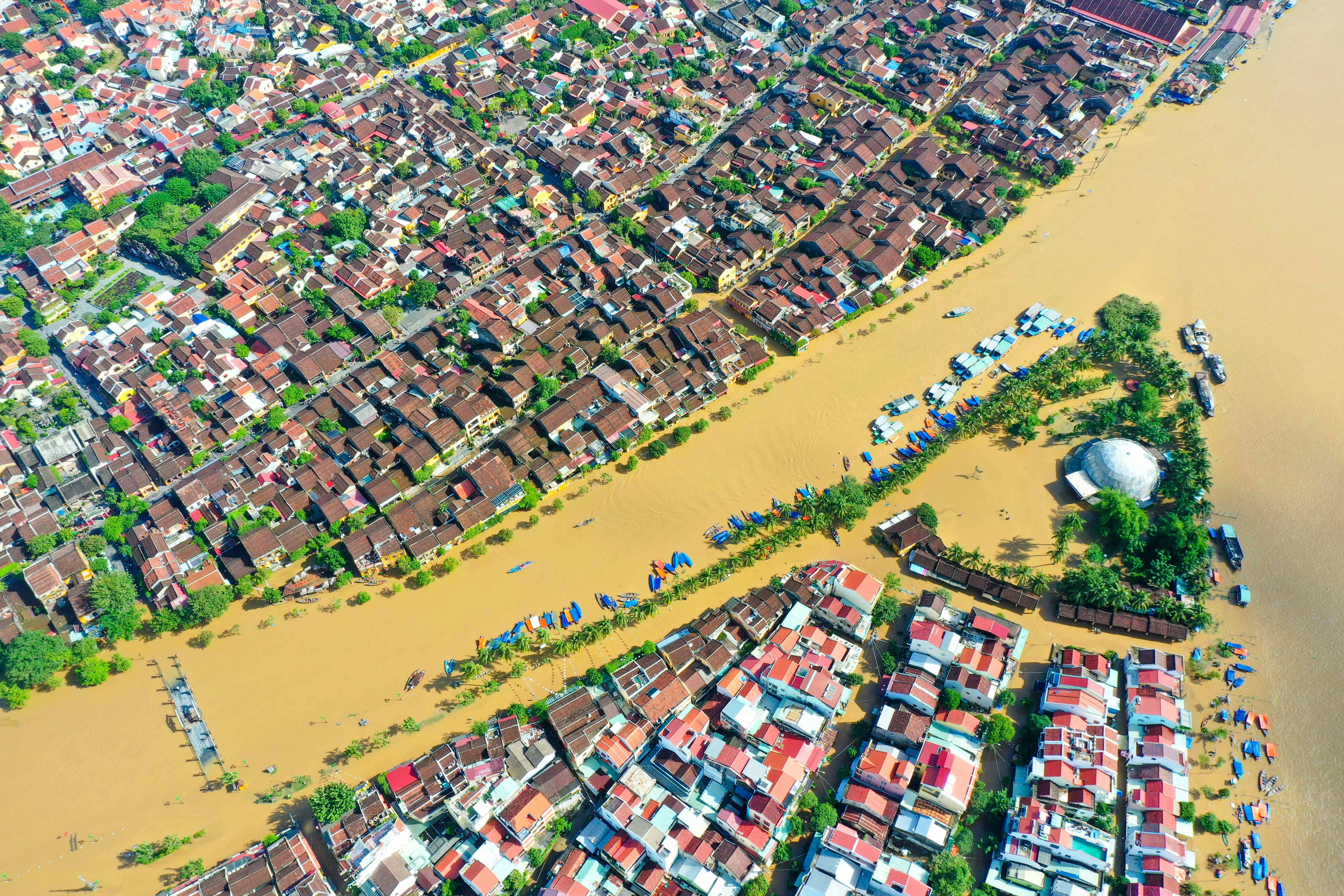Flooding is the most common and costly natural disaster in the United States. Homeowners everywhere need to be aware of the risks posed by floods and understand their insurance options. In this article, we explore Flood Insurance Coverage for homeowners, outlining what it is, how it works, who needs it, the types of coverage available, the pros and cons, its cost, how to get it, and tips for exploring your options. Let’s get started.
What is Flood Insurance?

Flood insurance coverage is a type of insurance that provides homeowners with financial protection against property damage caused by floods. It is separate from a homeowner’s regular policy and can help those affected by a large-scale natural disaster get back on their feet. Flood insurance is for those living in areas classified as high-risk for flooding, and for those whose mortgage lender requires it. It covers damage to a house and its contents due to a flood event, including repair costs and/or replacement of damaged items. Flood insurance also covers the cost of cleaning and drying out affected property, as well as additional living expenses if the home is uninhabitable. Homeowners should note that flood insurance protects against physical damage from flooding only and does not cover damages caused by mold, landslides, hurricanes, hail, tornadoes, or other natural disasters.
How Does Flood Insurance Work?
Flood insurance coverage can offer homeowners peace of mind against the risks of flooding. Understanding how flood insurance works can help you make the best choice when shopping for coverage. In general, flood insurance is coverage that pays for damage to your home caused by water entering it from an outside source, such as the ocean, rivers, streams, and other bodies of water. Flood insurance usually covers the building and any attached structures, not the contents of the home. Most insurance policies will also cover any additional living expenses you have while your home is being repaired or rebuilt.
The amount of flood insurance coverage you need depends on the risk of flooding in your area. There are many factors that determine this risk, such as your local topography, the size of the area surrounding your home, and the occurrence and duration of precipitation in your area. Higher risk levels typically require higher levels of coverage. It is also important to note that most home insurance policies do not cover flood damage, so it is important to purchase separate flood insurance if your area is at risk.
When you purchase flood insurance coverage, be sure to read the documents carefully and ask questions if you don’t understand the terms. It is also important to make sure the coverage is adequate to protect your home and possessions against potential flooding. Different policies can vary in detail, so be sure to understand the fine print and check with your insurance agent to make sure you are getting the coverage you need.
Who Needs Flood Insurance?
Generally speaking, anyone who owns a property or home in a geographic location prone to flooding is at risk of experiencing flood damage. Flood insurance coverage is designed to protect those who live in these risky regions by covering any losses due to flooding, providing financial stability to those affected. It is important to remember that, while standard homeowners’ policies may include limited coverage for water-related damages, they do not typically include protection from losses in the event of a flood. Consequently, any property located in a flood zone should have a specialized flood insurance policy in place to ensure adequate protection.
Flood risks can vary from state to state and from region to region, so it is important for homeowners to check local regulations and assessments to ensure they have the right coverage. Additionally, since individuals do not always have the expertise necessary to assess their own flood risk, they should also take the time to seek qualified professional advice on the type and amount of coverage necessary. By understanding the risks and having the right type of coverage, homeowners can rest assured their property is safe from flood-related damage and financial losses.
If you’re looking for more information about flood insurance coverage, visit Insurance Information Institute. It is a trusted source providing helpful information on different types of flood insurance policies to better prepare you and your family for the unexpected.
Types of Flood Insurance Coverage Available

When it comes to protecting your property, it’s important to make sure you have the right type of flood insurance coverage. There are several different types of coverage available, depending on your individual needs. The most basic type of coverage is NFIP insurance, which covers the structure of your home as well as personal possessions.
More comprehensive coverage is available through private insurers, which provides additional coverage for items, such as furniture and electronics. You can purchase additional endorsements to extend your coverage, including coverage for additional living expenses, increased liability protection, and coverage for additional structures, such as detached garages. Depending on your area, you may also have access to specialized coverage from specialty insurers, such as beachfront coverage for homes located in coastal areas of the US.
When choosing flood insurance coverage, it’s important to weigh the costs and benefits of coverage provided, as well as consider the potential risk of floods in your area.
Pros and Cons of Flood Insurance
When researching flood insurance coverage for homeowners, it is important to take into account the pros and cons of the policy. On one hand, this type of policy can provide financial protection in the event of a flood, ensuring that repairs and replacement costs are covered. Additionally, the policy will typically cover additional living expenses should the home become uninhabitable. Conversely, flood insurance can incur significant costs, with premiums that vary based on the location and the property’s flood risk, determined using FEMA maps. Furthermore, flood insurance may not cover all damages, so it’s beneficial to understand the limitations of a particular policy before committing. Additionally, the deductible may be higher than other policies, so it’s important to factor that into the decision-making process. Ultimately, homeowners should weigh the pros and cons of flood insurance to determine if it’s the right choice for them.
How Much Does Flood Insurance Cost?
The cost of flood insurance coverage varies depending on many factors. The amount of coverage needed, location, the age of the property, and the flood risk in the area are all important considerations when calculating how much a policy will cost. Generally, the higher the risk of flooding, the higher the premium.
Standard homeowners and renters insurance typically does not include flood insurance, so if you live in a high-risk area it’s important to buy a separate policy. You can get flood insurance through the National Flood Insurance Program (NFIP). The cost of coverage will depend on the limits of coverage chosen as well as the risks associated with the area.
Premiums also differ based on the type of coverage. Certain policies cover the expenses for repairing the property, while others provide reimbursement for items damaged or destroyed by flooding. Additionally, you have the option to purchase extended coverage limits, such as for structural damage caused by flooding, to ensure you have ample protection.
The bottom line is that flood insurance can be expensive, but it can be a wise investment for those living in areas prone to flooding. A comprehensive policy can be the difference between recovery and loss should the worst come to pass. Make sure to do your research and shop around for the most affordable and comprehensive coverage possible.
How to Get Flood Insurance
Obtaining flood insurance coverage is an important step to protect your home and belongings from flood damage. The process of getting flood insurance can be broken down into several steps.
First, you should contact your insurance provider to ask for information about their flood insurance policies. You may also be able to get flood insurance coverage through an organization or government body. After you’ve chosen a policy, you can begin the process of signing up. This process might require you to provide proof of ownership for your property and to provide a professional appraisal of the property.
Once these steps have been completed, you’ll receive a flood insurance policy that covers your home and possessions in the event of flooding. In addition, you’ll also need to pay an annual premium for your flood insurance coverage.
It’s important to remember to keep up with your payments as failure to do so may result in the policy being cancelled.
Tips on Exploring Flood Insurance Coverage
Exploring Flood Insurance Coverage for homeowners can be a daunting task. Therefore, the following tips are suggested for those interested in exploring Flood Insurance Coverage. Firstly, it is important to do your due diligence and research in order to understand the different coverage options available. It is also wise to look into the policy type, its benefits, and the cost of the policy so that you can compare them to your situation. Additionally, you need to make sure that the Flood Insurance Coverage you choose meets your specific needs and budget.
Another tip is to contact an experienced flood insurance provider in order to discuss your flood risk and eligibility for coverage. This provider may help you identify the need for any additional coverage beyond what is provided by the Flood Insurance policy. Furthermore, it is important to keep up to date with any changes in the law, as well as to review your coverage periodically.
Finally, it is equally important to utilize any resources available to you through your local government. Resources such as local Flood Insurance are available to assist with the cost and coverage and can be of great help in understanding the various policies. By comprehensively understanding various Flood Insurance coverage options, you can make informed decisions to safeguard your property from potential damage caused by flooding.
Flood Insurance Coverage – Conclusion
In conclusion, flooding is a major issue many homeowners are facing today. Homeowners need to be aware of their area’s potential flooding and know the steps to take to protect their biggest investment. Flood insurance is one of the most prominent options for homeowners to protect their homes against flood damage. Before homeowners consider getting flood insurance coverage, they need to first research types of coverage options, think about the pros and cons, and estimate how much it will cost them. Everyone must take the appropriate measures to protect their home from flooding and the best way to do that is to purchase flood insurance coverage.
We hope you enjoyed reading this article! If you would like to learn more about the important topic of home insurance policies, you won’t want to miss Understanding the Different Types of Home Insurance Policies. Be sure to check it out!




